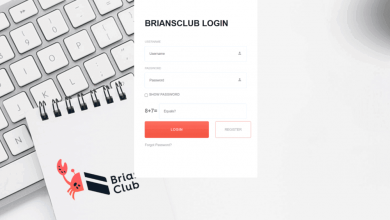Review Automation Software: Your Guide to Effortless Reputation Management

Managing online reviews can feel overwhelming, especially when you’re juggling multiple platforms and trying to respond to every customer comment. Between Google, Yelp, Facebook, and industry-specific sites, keeping track of what customers are saying about your business becomes a full-time job.
Review automation software changes this dynamic entirely. These tools streamline the review management process, helping businesses monitor, respond to, and leverage customer feedback more effectively. Whether you’re a small local business or a growing enterprise, the right automation platform can transform how you handle your online reputation.
This guide explores everything you need to know about review automation software, from core features to implementation strategies that actually work.
Review automation software helps businesses manage their online reviews across multiple platforms from a single dashboard. These tools automatically monitor review sites, send notifications when new reviews appear, and often include features for generating review invitations and crafting responses.
The software typically integrates with major review platforms like Google My Business, Yelp, Facebook, TripAdvisor, and industry-specific sites. Instead of manually checking each platform daily, you receive consolidated updates about all your reviews in one place.
Key capabilities include review monitoring, automated alerts, response templates, analytics dashboards, and review generation campaigns. Some advanced platforms also offer sentiment analysis and competitive benchmarking features.
Core Features That Matter
Multi-Platform Integration
The best review automation software connects with all major review sites where your customers leave feedback. This includes general platforms like Google and Facebook, plus industry-specific sites relevant to your business type.
Look for tools that support at least 10-15 major platforms and offer API connections for custom integrations. The more comprehensive the coverage, the less manual monitoring you’ll need to do.
Real-Time Monitoring and Alerts
Automated monitoring ensures you never miss a review. Quality platforms send instant notifications via email, SMS, or in-app alerts when new reviews appear.
Advanced systems can also monitor for specific keywords or sentiment changes, alerting you to potential reputation issues before they escalate.
Response Management Tools
Most platforms include templates and suggested responses for common review scenarios. This speeds up your response time while maintaining consistency in tone and messaging.
Some tools offer AI-powered response suggestions that adapt to the specific content of each review, though human oversight remains essential for maintaining authenticity.
Review Generation Features
Many businesses struggle to encourage satisfied customers to leave reviews. Automation software often includes campaign tools for sending review invitations via email or SMS.
These features typically allow you to customize invitation timing, messaging, and follow-up sequences to maximize response rates without appearing pushy.
Benefits of Using Review Automation Software
Time Savings and Efficiency
Manual review management can consume hours each week. Automation software reduces this to minutes by centralizing all review activities in one dashboard.
You can quickly scan new reviews, respond using templates or suggestions, and track performance metrics without switching between multiple websites.
Improved Response Rates
Faster response times lead to better customer relationships and improved search rankings. Automation ensures you see reviews immediately rather than discovering them days or weeks later.
Quick responses show potential customers that you value feedback and actively engage with your community.
Better Review Volume
Systematic review generation campaigns typically increase review volume by 30-50% compared to passive approaches. More reviews provide stronger social proof and can improve local search visibility.
Competitive Intelligence
Many platforms include features for monitoring competitor reviews and ratings. This intelligence helps you identify market opportunities and benchmark your performance against similar businesses.
Popular Review Automation Platform
Review Rover
Review Rover specializes in automated review management for local businesses, offering multi-site monitoring, customizable response templates, and review generation campaigns.
Key features include Google My Business integration, automated review invitations, and analytics dashboards showing review trends over time. The system also provides competitor monitoring and local SEO insights.
Review Rover’s pricing scales with business size, making it accessible for small businesses while offering enterprise features for larger organizations.
Choosing the Right Software
Assess Your Current Review Volume
High-volume businesses need robust automation and advanced analytics. Smaller businesses might prioritize ease of use and affordable pricing over sophisticated features.
Count your monthly reviews across all platforms to understand your baseline requirements.
Consider Integration Needs
Review your current tech stack and identify necessary integrations. Some businesses need CRM connections, while others prioritize point-of-sale system integration for automated review invitations.
Evaluate Support and Training
Implementation success often depends on quality onboarding and ongoing support. Look for platforms that offer training resources, responsive customer service, and clear documentation.
Test Before Committing
Most reputable platforms offer free trials or demos. Use these opportunities to test the interface, evaluate feature sets, and assess how well the tool fits your workflow.
Implementation Best Practices
Start with Monitoring Setup
Begin by connecting all your review platforms and configuring notification preferences. Ensure alerts reach the right team members who can respond promptly.
Develop Response Templates
Create template responses for common scenarios: positive reviews, negative reviews with specific issues, and neutral reviews. Customize these templates to match your brand voice.
Train Your Team
Everyone handling reviews should understand your response guidelines, escalation procedures, and brand messaging standards. Consistent communication builds stronger customer relationships.
Monitor and Adjust
Review your automation rules and response templates regularly. Customer preferences and platform algorithms change, so your approach should evolve accordingly.
Making Review Automation Work for Your Business
Review automation software transforms reputation management from a reactive chore into a proactive growth strategy. The key lies in choosing a platform that matches your business needs and implementing it systematically.
Start by auditing your current review management process. Identify time-consuming tasks that automation could streamline, then evaluate platforms based on those specific pain points.
Remember that automation enhances human effort rather than replacing it entirely. The most successful businesses combine efficient tools with genuine customer engagement and continuous improvement based on feedback trends.
Ready to streamline your review management? Consider starting with a platform trial to experience the efficiency gains firsthand. Your future self will thank you for taking this step toward more effective reputation management.

Source: Review Automation Software: Your Guide to Effortless Reputation Management


